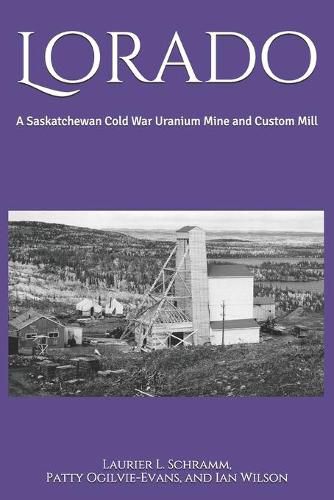Readings Newsletter
Become a Readings Member to make your shopping experience even easier.
Sign in or sign up for free!
You’re not far away from qualifying for FREE standard shipping within Australia
You’ve qualified for FREE standard shipping within Australia
The cart is loading…






The Lorado deposit was discovered in 1950 in a remote location in northern Saskatchewan, and just north of Lake Athabasca. Subsequent exploration and development led to a mine, mill, and associated campsites being built, all of which were fully operational by 1957. The Lorado mill was unique, having been designed to process ores from smaller, neighbouring mines that would otherwise not have succeeded. This made Lorado the third largest producer of uranium (yellowcake) concentrate in Saskatchewan and one of the top five in Canada during the Cold War era. By 1960 the markets for uranium had crashed and operations were closed but, having produced about 1,210 tonnes of uranium concentrate, Lorado had played a significant role in helping Canada become one of the largest uranium producers in the world. Beyond uranium, the Lorado mine produced about 500,000 m3 of highly acidic tailings, which entered nearby Nero Lake virtually destroying it. Following closure in 1960, the Lorado site stood abandoned for the next twenty years, until the site owners cleaned up most of the mine infrastructure in 1982, and the mill buildings in 1990. Another sixteen years would pass before the government of Saskatchewan stepped in and contracted the management of the rest of the remediation to the Saskatchewan Research Council (SRC). At the time of writing this book essentially all of the Lorado sites’ remediation had been completed, with active monitoring in progress subsequent to ultimately releasing them into a long-term management and monitoring program.
$9.00 standard shipping within Australia
FREE standard shipping within Australia for orders over $100.00
Express & International shipping calculated at checkout
The Lorado deposit was discovered in 1950 in a remote location in northern Saskatchewan, and just north of Lake Athabasca. Subsequent exploration and development led to a mine, mill, and associated campsites being built, all of which were fully operational by 1957. The Lorado mill was unique, having been designed to process ores from smaller, neighbouring mines that would otherwise not have succeeded. This made Lorado the third largest producer of uranium (yellowcake) concentrate in Saskatchewan and one of the top five in Canada during the Cold War era. By 1960 the markets for uranium had crashed and operations were closed but, having produced about 1,210 tonnes of uranium concentrate, Lorado had played a significant role in helping Canada become one of the largest uranium producers in the world. Beyond uranium, the Lorado mine produced about 500,000 m3 of highly acidic tailings, which entered nearby Nero Lake virtually destroying it. Following closure in 1960, the Lorado site stood abandoned for the next twenty years, until the site owners cleaned up most of the mine infrastructure in 1982, and the mill buildings in 1990. Another sixteen years would pass before the government of Saskatchewan stepped in and contracted the management of the rest of the remediation to the Saskatchewan Research Council (SRC). At the time of writing this book essentially all of the Lorado sites’ remediation had been completed, with active monitoring in progress subsequent to ultimately releasing them into a long-term management and monitoring program.